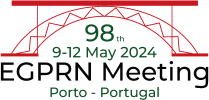An after-hours telemedicine urgent care service may not improve access to care for underserved populations
Jonathan Brill, Anthony D. Heymann, Galia Zacay
Keywords: Telemedicine, After-Hours Telehealth, Remote Emergency Care, Healthcare Disparities
Background:
After-hours telemedicine services for emergency care are thought to offer a solution for patients who live at a distance from traditional face-to-face emergency services.
Research questions:
This study evaluates such a service in a Health Maintenance Organization. We analyzed its patients' demographic and clinical characteristics and outcomes of these encounters, focusing on the differences between central and peripheral populations.
Method:
In this cross-sectional database study, we collected data regarding the encounter and patient characteristics, including prescriptions, referrals for further evaluation in a traditional emergency department (ED), and the distance from a traditional ED. Other outcome measures included healthcare utilization after the encounter such as primary care physician encounters, additional telemedicine encounters, ED visits, and hospitalization.
Results:
45,411 patient visits were analyzed. Medication was prescribed in 25% of the encounters, and a referral to an ED was given in 22%. 17.7% of the patients visited an ED within 24 hours of the index encounter. 64.8% of patients visited a PCP in the following 30 days. No further care was needed in 32.4% of the encounters. In multivariable logistic regression, the odds of using the service were lower for low SES groups and inhabitants of the periphery than the central areas. A weak reverse correlation was observed in Jewish sectors regarding distance from traditional ED, while no correlation was found in the Arab sector.
Conclusions:
It is commonly believed that telemedicine overcomes geographical barriers. The results of this research do not support this hypothesis.
Points for discussion:
The impact of socioeconomic status on the use of telemedicine services.
Cultural, social, or infrastructural factors that might influence differences in interaction with telemedicine services.
Impact of telemedicine on emergency department and primary care visits.
#17

